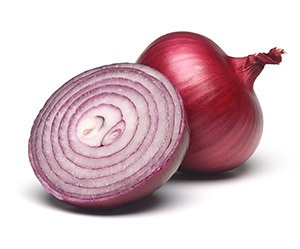August 1, 2020 | FOR IMMEDIATE RELEASE

Consumers, restaurants, and retailers should not eat, sell, or serve red, white, yellow, or sweet onions from Thomson International, Inc. or products containing such onions. If you cannot tell if your onion is from Thomson International Inc., or your food product contains such onions, you should not eat, sell, or serve it, and should throw it out.
This outbreak is rapidly growing in size with 10 confirmed cases reported in Ottawa County to date.
"We have been actively investigating multiple infections of Salmonella Newport which are believed to be linked to this outbreak," said Spencer Ballard, environmental health supervisor, Ottawa County Department of Public Health.
Nationally, 396 cases have been reported in 34 states, with 59 hospitalizations and 0 deaths. Several onion types (including red, white, yellow, and sweet varieties) from Thomson International Inc., or products made with these onions have been associated with the outbreak. If you have symptoms of a Salmonella infection, report your illness to the Ottawa County Department of Public Health and talk to a healthcare provider. If you receive a call from us, please answer the questions about your illness and the foods you ate before you got sick. This information is vital for public health officials to identify the source of this outbreak and to take steps to prevent additional illnesses.
If you think you may be infected, click here.
 |
 |
-
Restaurants and retailers should not serve or sell any onions from Thomson International, Inc., or food prepared with these onions.
- If you don’t know where your onions are from, don’t serve or sell them.
- Clean and sanitize all surfaces that onions have come in contact with, including cutting boards, countertops, slicers, utensils, and storage bins.
-
Suppliers, distributors, and others in the supply chain should not ship or sell any onions from Thomson International, Inc.
- Suppliers and distributors that repackage raw onions should clean and sanitize any surfaces and storage bins that may have come in contact with recalled onions.
-
At home, check your refrigerator and kitchen for any of these onions or fresh foods made with them.
- Check the package or look for a sticker on an onion to see if it is from Thomson International, Inc. If it is, don’t eat it. Throw it away.
- If you can’t tell where your onions are from, don’t eat them. Throw them away.
- If you made any foods with onions and you don’t know where they are from, do not eat them. Throw them away, even if no one got sick.
- Wash and sanitize any surfaces that may have come in contact with onions or their packaging, such as countertops, refrigerator drawers, knives, and cutting boards.
-
When you eat out or shop for food, check with restaurants and grocery stores to make sure they are not serving or selling onions from Thomson International Inc., or fresh foods prepared with them.
- If they don’t know where their onions are from, don’t buy the product.
- People sickened in this outbreak reported eating raw onions in freshly prepared foods, including salads, sandwiches, wraps, salsas, and dips.
LEARN MORE ABOUT SALMONELLA
|